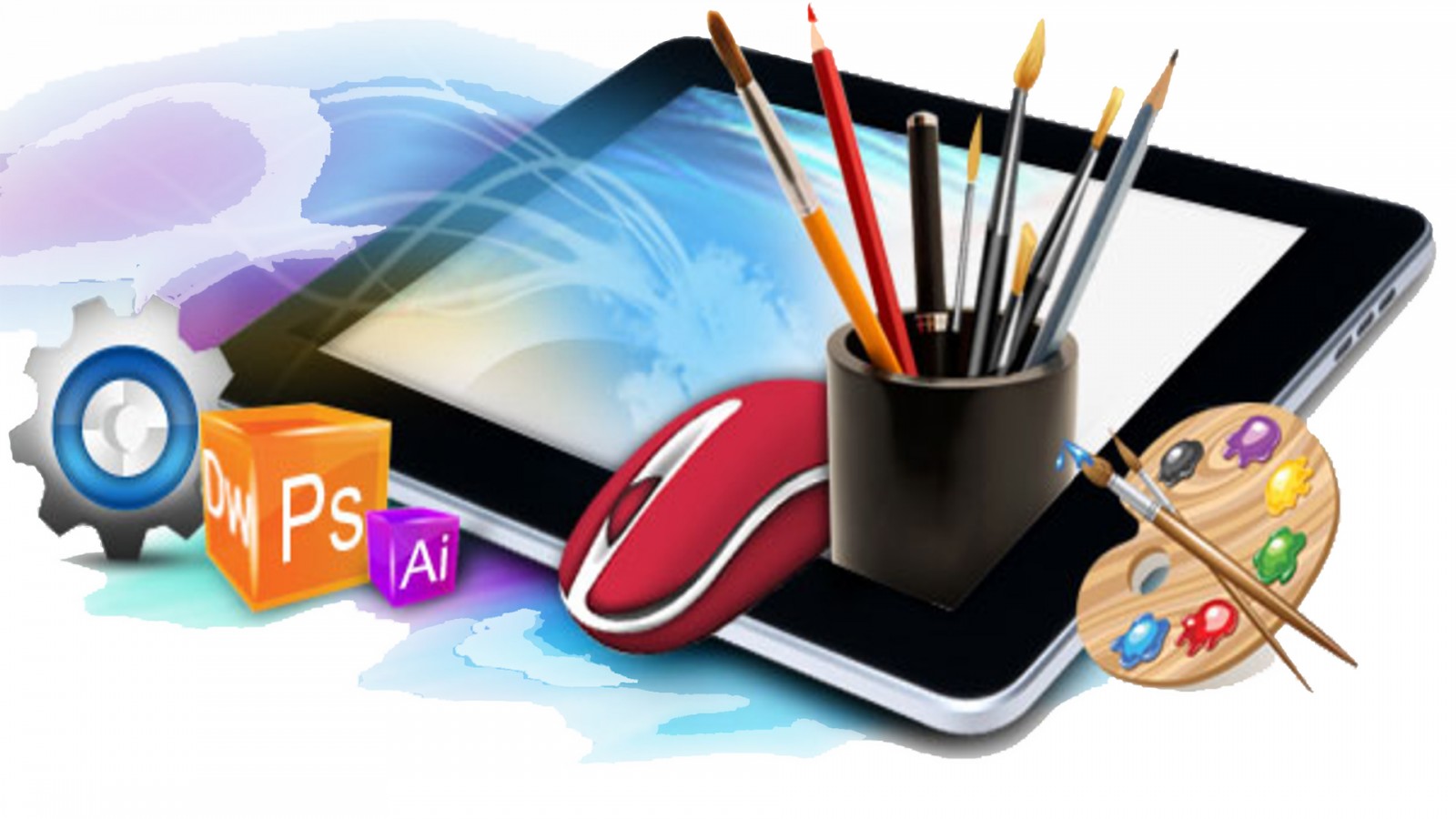Magical, mysterious, and unusual 3D visualization technology finds applications across a wide range of industries. And web design is no exception. Even though web design exists in a two-dimensional space, this doesn’t stop web developers—they turn a flat plane into isometry. They push boundaries and offer users a new dose of impressions and emotions.
The 3D trend could be discussed for hours and even weeks. We already touched on this topic a bit when we covered virtual reality (VR) . But now we’ve decided to explore a simpler subject—three-dimensional scenes and objects used in web design. Even more than that—we’ll see where Photoshop comes in handy and, perhaps most interestingly, what kinds of 3D variations are being created by web designers.
Space
When it comes to web design, 3D objects still live within 2D space. Otherwise, you would need VR technologies and special glasses. But that’s not always convenient, right?
If a web designer chooses to implement 3D effects in their project, there can be an incredible number of variations. Game-inspired interfaces, product demos, logos, and narrative scenes—it’s all becoming increasingly trendy. Even if the whole website isn't 3D, and only a few elements are. We’re talking about sites like 3magine, Unitepeople, Oneis, Malibuboats, Beobank, Intouch, Cristof-Echard and others that use 3D visuals in different ways.



When working with 3D imagery, there are several especially important aspects:
For example, Beobank used a game-style cursor to demonstrate the benefits of credit cards. The cursor icon comes with a caption that makes the action clear: click, drag, move. The 3D effect is achieved through deformation of the card and accompanying animation.

Matter-of-mind takes a more unusual approach. As you move the cursor over section titles like Studio, Lab, Shop, the logo in the background changes as a visual hint of what the section is about. Visiting each section, you’ll find 3D illusion effects and various animations with images and text that contribute to the sense of dimensionality.

Similarly simple and user-friendly is the sports project Your Sport Agent, where designers used animated hints, 3D character models, and a clean layout for other pages.

Layers and Material Design
The rise of 3D in design and its growing popularity are largely thanks to Material Design. Based on Google’s concept, designers are bringing back certain techniques previously abandoned when Flat design and minimalism took over. Most notably—shadows. They always demand special attention because they must fall in the direction of the light source. If the shadow looks natural, the object appears to have depth, standing out from text, background, or other elements.
The menu items on Legis cast shadows. Each one has its own, though it may look like they blend together.

The small illustrations on Intouch also include shadows. Not all of them fall directly under the characters, but they do land on shoulders, hands, parts of faces. All of this contributes to the 3D feel. Remove the shadow, and it’s just a flat image.

The key idea behind Material Design is the hierarchy of objects on a flat surface. Google's documentation even highlights the use of 3D space and refers to the x, y, and z axes. This is implemented on websites like Cristof-Echard, Lampinroom, Unitepeople, Pholc, Akvaren, Divan.



Illustrations and Animations
Using a 3D object is where you can combine dimensionality and animation or take an illustration to a whole new level. For instance, online stores offer 360 ° product views. And it's not a product video—they animate the object using photos, allowing users to rotate the item by clicking and dragging with the mouse.

Product pages with this format tend to have very high conversion rates. Makes sense—if you can view the item like in a physical store, change its color or size, you're more likely to order it for delivery, try it on, and buy it.
This approach is also used for sites in other categories. Sure, a static image or illustration can work. But when you replace it with a volumetric version, the project feels completely different. Examples include Muller, Milkable, Fracademy, Vig-re, Mausoleodiaugusto, Packwire, Supremo.



A Note to Remember
When working with 3D visualizations, simplicity is key. Don’t overwhelm users with too many effects or elements used just for the sake of having them. 3D design is all about visual illusion on a flat canvas. So it’s important to keep these tricks to a minimum. That way, users won’t feel overwhelmed and can focus on your content. Then the 3D inspiration will come naturally.
Stereoscopic 3D
In addition to regular 3D, some designers create unique, rare Stereo 3D projects . Yes, just like VR, they require glasses—but much simpler ones. Think of the kind you wear in cinemas: gray-tinted lenses or red-blue filters. The cool thing is you can view the images even without glasses, although you won’t get the full depth effect. On the upside, creating the visuals is easier. You just need to split the image into color channels and add a bit of animation. No complex tools like VR require.
The downside is that these websites are rare and not really built for a wide audience. Not everyone owns such glasses, and not all devices support the effect.
Projects like Odra, Massmigrations, Mappi, Vinylcuts, DEVX Experiments – DDD 2017, Standardabweichung, Les nouveaux pauvres, Distortion Effect, Instancing, Digitalpodge, Turimagen are great examples. Since this style is so rarely used, it’s at least worth exploring out of curiosity.





Final Thoughts
Along with 3D effects, you can avoid making your typography and visuals feel outdated. But it’s easy to go overboard with “cutting-edge” design, which can annoy users.
The subtle art of using 3D is making it feel natural—not something obviously added on. The only exception is stereoscopic images made from a single photo. If shot with a stereo camera, the effect is stronger and smoother.
Well-crafted 3D interfaces and content elements help users stay longer on your site, engage with the content, and even return to explore more.
